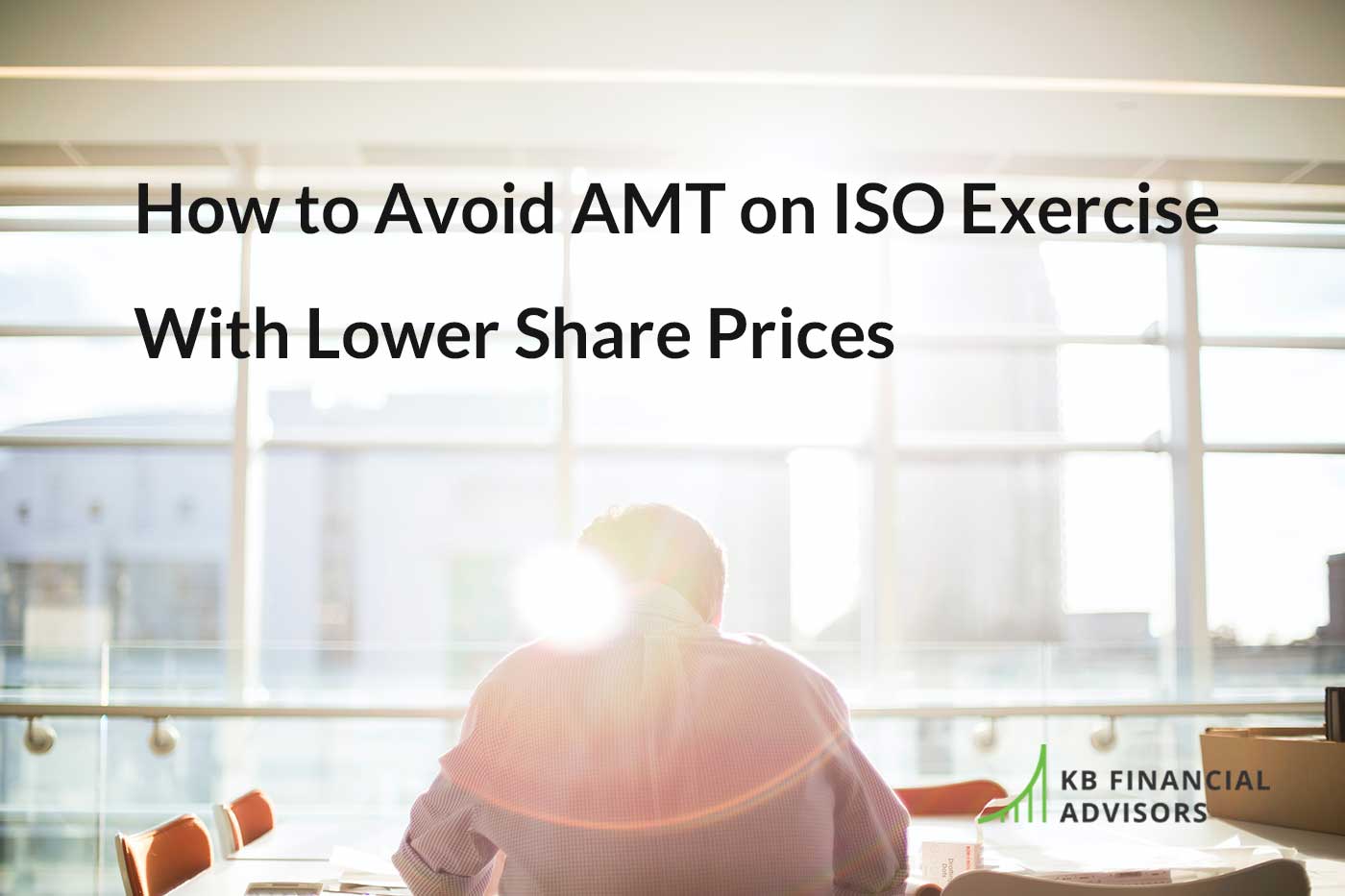It’s no secret at this point:
We’re in a bear market, and stock prices are going down for A LOT of companies. ????????
And while we certainly hope there’s no serious long-term damage done to investor portfolios, there is a silver lining for tech employees with ISO (incentive stock options):
Because the market has fallen to levels not seen since late 2016 / early 2017, you may be able to exercise more of your ISO without triggering or having to pay the AMT.
With AMT, the current market value of the stock price is THE thing that determines how much you can exercise before hitting the AMT threshold… so the lower your stock price goes, the more shares of ISO you can buy, because you make less “profit” when you exercise.
It’s an indirect relationship:
If the stock price goes up, you “earn” more for each share you exercise, which means the number of ISO you can exercise before hitting AMT goes down.
But if the stock price goes down — like it is for a lot of companies right now — you “earn” less on each share exercised, so the number of ISO you can exercise before you have to pay the AMT goes up.
Therefore, you can avoid AMT on ISO exercise while exercising more ISO than ever before.
For example, let’s pretend you work at Pinterest:
Let’s pretend you work at Pinterest, and you earn a yearly base salary of $200,000. At the beginning of the year, you had projected RSU vesting of $175,000, and you’ve got 20,000 ISO vested at an exercise price of $4.15.
On January 2, 2020, Pinterest’s share price was $18.80.
On February 25, 2020, it peaked at $25.20.
But at the time of writing this post (late March / early April 2020), the price had gone down to $14.03 per share, which was a 25% decline from the start of the year, and a 44% decline from the peak in February.
We’ll also assume you’re single and take the standard deduction for that.
Got it?
Okay, let’s get into the math:
How to Calculate The Amount of ISO You Can Exercise Without Hitting AMT
Any time you exercise ISO, it counts as a deferral item for the AMT.
To figure out what your deferral item limit is (which will tell you how much ISO you can exercise before you have to pay AMT), you need to first create a tax projection for how much you’ll owe this year using last year’s tax return, your most recent pay stub, and the value of all the RSU that will vest this year.
(As you can imagine, this involves A LOT of not-so-simple tax math, which is why we recommend you work with a tax & financial planning pro to figure this out. Click here to start working with one of our experts on staff.)
Using the facts from our Pinterest example above, we’d calculate that you have a $75,000 deferral item amount to work with before you hit the AMT.
Using that $75,000 as a base number, we can work backwards to figure out the number of ISO you should exercise without triggering the AMT.
Here’s the formula we’d use:
Number of ISO to Exercise = Deferral Item / (Market Price – Exercise Price)
Substituting in our example numbers:
Number of ISO to Exercise = $75,000 / ($18.80 – $4.15)
Number of ISO to Exercise = $75,000 / ($14.65)
Number of ISO to Exercise = 5,119
In this case, you could exercise 5,119 of your ISO shares before you had to pay the AMT.
Notice we used the January 2nd price of $18.80 for this example… but the stock price changes every day.
If we used the February 25th price, you could only exercise 3,563 shares. (30% less than the January 2nd price.)
But if we used the low price at the time of writing ($14.03), you could exercise 7,591. (48% more than the January 2nd price, and 113% more than the February 7th price.)
The price changes every day, so it’s something you’ll want to keep your eye on when planning a strategy like this.
A Word to the Wise: Watch Out for RSU
Something to be aware of is the fact that even though your RSUs are not cash (they’re actually shares), they are taxed like cash.
This alone makes them a little annoying to account for in tax calculations and tax payments, but it’s also important to keep in mind that the “value” of these RSU will fluctuate depending on how your share price fluctuates.
So… to make a long story short:
The declining value of your RSU share price also affects the math on how much ISO you can exercise before hitting the AMT. As the share price drops on the RSU shares that vest, the income you recognize for your AMT calculations drops too.
This is why it’s important to work with a professional so you don’t accidentally mis-calculate and end up owing a huge amount of money for AMT that you weren’t expecting to pay.
Conclusion: Avoid AMT on ISO Exercise & Set Yourself Up for Bigger Future Profits
The great thing about exercising more ISO while still avoiding the AMT is two-fold:
One, you don’t have to pay a lot of extra money in taxes this year.
Two, the more shares you own and are able to sell after a year, the more money you’ll make at the future (rebounded) share price.
Figuring out exactly how much ISO you can exercise right now without triggering the AMT could be a great financial move for you, and help lessen the blow of any losses you’re seeing as a result of the current bear market.






